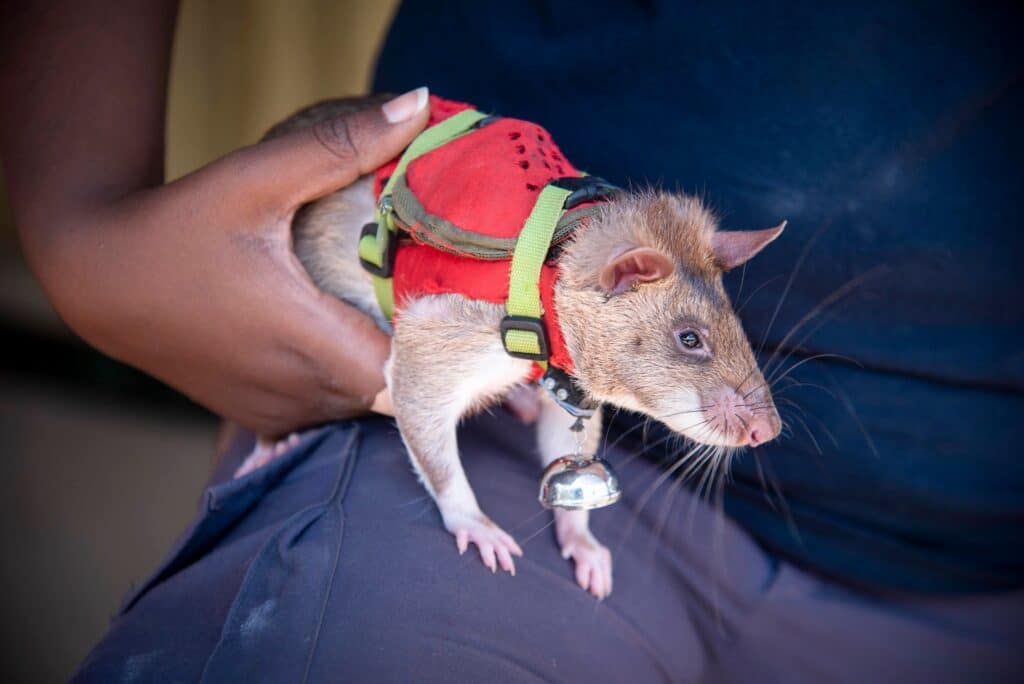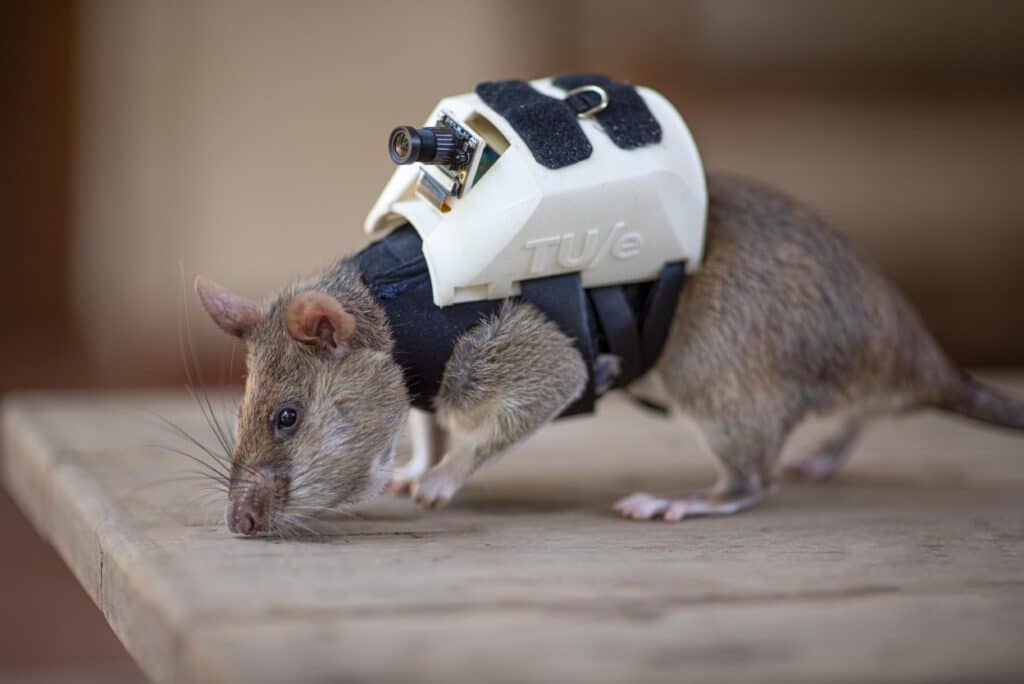It is peaceful at APOPO’s Training site in Morogoro. HeroRAT Daniel and his unit wait quietly in the shade for their training sessions to begin. The rats are secure and comfortable in a travel box padded with wood chippings. They are rolled up into a signature ‘ball’ taking a nap. This is normal for the African giant pouched rat (Cricetomys ansorgei) – because they are nocturnal.
APOPO has been training rats to save lives using their extraordinary sense of smell for almost 25 years. Dr. Donna Kean and fellow researchers are training a group of 7 pouched rats to save lives in a new way: by searching through debris of collapsed buildings to help find survivors.

Search & Rescue
Natural disasters have devastating effects on human lives, with earthquakes and typhoons ranking among the most catastrophic. Scientists from the World Meteorological Organization estimate these events may become more frequent due to climate change.
Expertly trained search and rescue teams quickly mobilize to locate and bring out victims trapped inside collapsed building following a natural disaster, but their efforts can be slowed by supportive tools that are limited in their ability to navigate through the debris. Because of their size and agility, our rats could uniquely complement existing search & rescue efforts. APOPO’s partner GEA, a Turkish search and rescue volunteer organization revived the idea after reading about the HeroRATs in the news.

When it is his turn, Daniel is roused gently by a rat trainer who allows him 5 minutes of warmup time to wake and explore a closed off area fitted with obstacles for him to walk around, sniff and climb. As the timer goes off, Daniel wriggles into a training vest and is eager to go as he anticipates what is coming next.
Training RescueRATs
The first thing the researchers did was to train the rats to pull at a ball attached to their vest. The ball is connected to a microswitch, which emits a beep. .
When the rats were reliably doing that, they introduced a target human. The goal became for the rat to search for the person within a mock debris site, pull the ball, and return to where they were released from when they hear their return signal. There they were rewarded with a tasty food treat: avocado and banana mixed with crushed rodent pellets dispensed through a syringe.
The researchers are now increasing the complexity of the environment to more closely mimic real disaster sites. Introducing lots of obstacles and loud noises makes the RescueRATs comfortable working in unpredictable environments.

The training site mimicking a collapsed structure was built at APOPO’s training and research headquarters in Morogoro, Tanzania with support from the Ludwick Family Foundation. The initial training has provided very promising results.
Smart Backpack
A multifunctional backpack for the rats is being designed in collaboration with a team of engineers from Eindhoven University of Technology (TU/e). We plan for it to include a video camera, microphone and speaker for 2-way communication, and a device for tracking where the rat is located.

The backpack will enable real-time communication from within the debris site, with the survivor. The combination of trained rats and a technology-enabled backpack would exceed current search technologies to focus rescue efforts quickly and efficiently. Trained rats with smart back packs could also be used for other detection tasks such as the inspection of packed shipping containers.
Next Steps
Once the rats are practiced, APOPO plans to move them to Turkey for additional training trials with GEA. And finally, if successful, they will then move to operational trials in which the rats could be mobilized in response to any natural disaster.
APOPO is deeply grateful to all the partners and donors who generously
support us with grants, collaboration and support.





